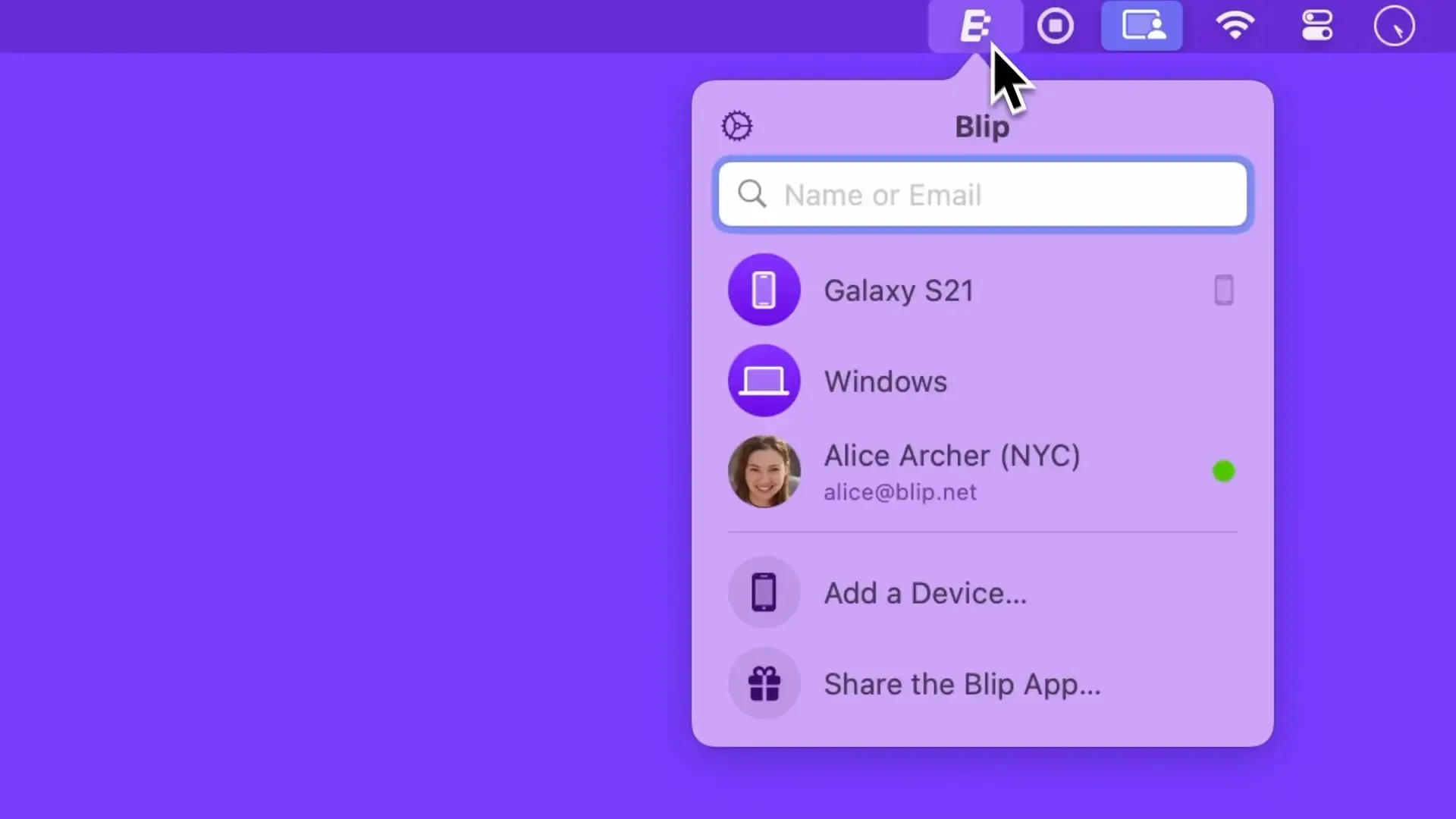I recently discovered Blip while struggling to send a large video file from my M2 MacBook Air to a colleague’s Windows machine. Like many Mac users, I’ve grown accustomed to AirDrop’s seamless file sharing, but it’s frustratingly limited to Apple devices. Blip solves this exact problem by bringing AirDrop-like functionality to any platform with no file size restrictions.
Blip operates as a lightweight menu bar app that enables direct, peer-to-peer file transfers across Mac, Windows, iOS, and Android devices. What sets it apart from cloud-based solutions like Dropbox or Google Drive is its direct connection approach - files transfer immediately at full speed without uploading to servers first. I’ve been testing transfers between my MacBook and various devices, and the speed difference is remarkable.
The Mac interface is beautifully designed and intuitive. Clicking the Blip icon in your menu bar reveals a dropdown showing all your connected devices and contacts. You can either drag files directly onto a recipient’s name or select them first and choose what to send. The app supports both individual files and entire folders without requiring compression - a feature that saves considerable time when sharing complex project directories.
I tested Blip with a 6GB video project folder, and the transfer completed in under a minute over my home network. The app showed real-time progress indicators and transfer speeds, making it clear when the process would complete. Even more impressive, when my internet connection briefly dropped, Blip automatically paused and resumed the transfer once connectivity returned.
The cross-platform compatibility is Blip’s killer feature. Unlike AirDrop’s Apple-only ecosystem, I can now send files seamlessly to Windows colleagues, Android devices, and even Linux machines (via the web interface). Both sender and receiver need Blip accounts, but the setup process is straightforward and worth the minor friction for the convenience gained.
Performance-wise, Blip uses roughly 2% CPU usage during active transfers and around 100MB of memory when idle - reasonable for a network-intensive application. The app requires macOS 10.15 Catalina or newer and integrates beautifully with the native menu bar design, supporting both light and dark modes automatically.
Currently, Blip is free for personal use, making it an excellent value proposition for individuals and creative professionals who regularly share large files across different platforms. The developers have mentioned commercial pricing plans for business use, but personal users can enjoy unlimited transfers without cost.
The only limitation I’ve encountered is the requirement for both parties to have Blip installed and configured. Unlike email attachments or cloud sharing links, you can’t send to someone without the app. However, for regular collaborators who install Blip, it becomes the fastest and most reliable file transfer method available.
Blip represents exactly what I want from a menu bar app - it solves a specific problem elegantly without cluttering the interface. For Mac users who frequently collaborate across different platforms or need to transfer large files quickly, this is a genuinely useful addition to your menu bar arsenal.
